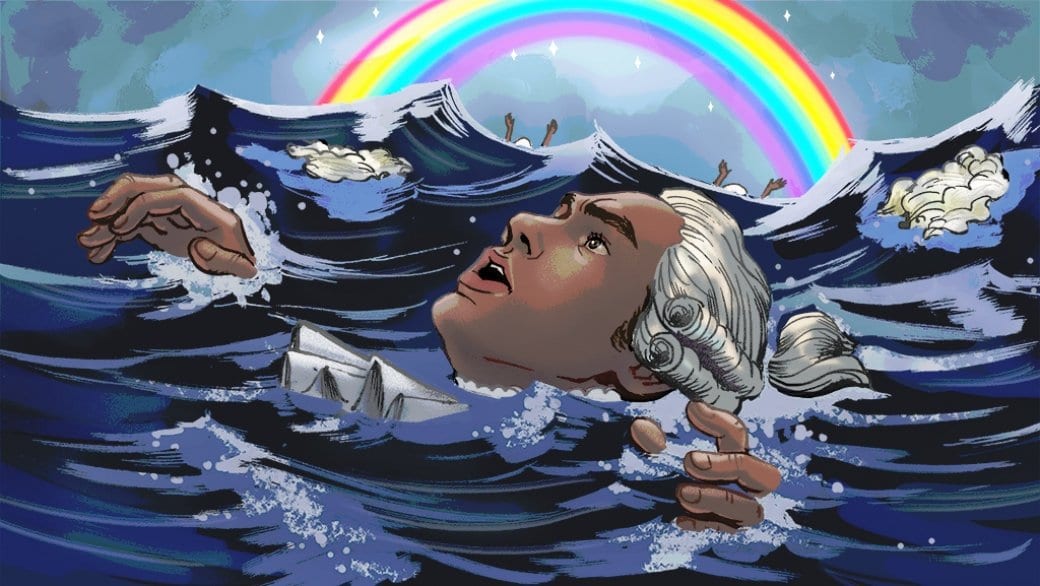In 1730, the people of the Netherlands (then sometimes called the Dutch Republic) lost their damn minds, killing dozens of gay men. Nothing like it had yet happened in Europe, and nothing like it would happen again until the Nazis.
I don’t think it’s too extreme to say they lost their damn minds — homosexuals were a handy scapegoat for the declining economy, but the murders were primarily inspired by a kind of religious hysteria. They feared homosexuality would upset a homophobic god to such an extent that he’d wipe the country off the map.
It was sparked by the discovery of what we today consider to be harmless — more than that, essential — social networks. Namely, social clubs, organizations and structures intended to help make the lives of homosexuals easier. And this probably wouldn’t have caused such a panic if they hadn’t learned about such things in a scandalous way.
Two men were arrested for sodomy. They pointed to a 22-year-old former soldier and current servant named Zacharias Wilsma. Wilsma apparently got around, because he then ratted out another 140 gay men living in various cities. And presumably those accusations led to more accusations. Investigations began in the cities of Amsterdam, The Hague, Rotterdam, Haarlem and Leiden. It seemed that all of a sudden homosexuality was a widespread, terrifying epidemic.
It was a matter of national security. They believed that god protected them from hostile foreign powers like France and Spain. Would a furious god withdraw his protection because of all the Dutch sodomites? Much of the Netherlands lay below sea level, and they were victim to occasional flooding — would that spitting-mad god instead just wash everyone away with a Noah-style flood?
So, they set about clearing the gay blight from the land, beginning a horrific witch hunt that lasted about two years. The investigations began in the cities and spread to the towns and smaller villages. About 250 trials took place, and at least 75 men were killed.
About 100 men fled the country when the trials began. The States of Holland, one of the Netherlands’ seven provinces, issued a sort of decree on July 21, 1730, heavy with references to Sodom and Gomorrah, and talk of sacred laws and God Almighty’s wrath. Many men had already fled the country, so the decree said that anyone who had left his home “without apparent good cause” would be exiled if he failed to report the reason for his absence. It also said that men convicted of homosexuality in that province would be executed, but left the method up to the imaginations of the judges.
The judges had a lot of leeway all across the country. The provinces of the Netherlands were only loosely connected, and didn’t even share a criminal code. Some areas adhered to Holy Roman Emperor Charles V’s imperial code of 1532, which said homosexuals should be burned. Others just assumed the they should be killed in some way or other because god said so.
I have access to some examples out of Amsterdam. Pieter Marteyn Janes Sohn and Johannes Keep (a decorator) were strangled and then burned. Maurits van Eeden (a servant) and Cornelius Boes (Keep’s 18-year-old servant) were drowned in barrels. Laurens Hospuijn (chief of detectives in the navy) was strangled and then thrown into the sea, tied to a weight. There are so, so many more examples I could give of strangulations, burnings, drownings and hangings, and many men had more than one of these things done to them (quite unnecessarily).
It was a bizarre period in the history of a country which was much affected by the Enlightenment — in fact, it was considered one of the most tolerant countries in Europe at the time — and which is today very permissive (we all know somebody who’s been to Amsterdam). But through a kind of religious insanity, dozens of men and teenage boys were tortured, murdered and tossed away into the sea like garbage.
Furious though it had been, the massacre soon ended. There were mass arrests from time to time later in the century, but nothing as bad. The Netherlands’ last public execution for sodomy happened in 1803, and the laws changed for the better soon after. Following World War II, the Netherlands’ capital of Amsterdam became known as a city very supportive of queer rights, and is the site of a monument to not only those homosexuals murdered by the Nazis, but those killed in 1730 in the Netherlands.
For more on this subject, see Louis Crompton’s Homosexuality and Civilization.
History Boys appears on Daily Xtra on the first and third Tuesday of every month. You can also follow them on Facebook.


 Why you can trust Xtra
Why you can trust Xtra


